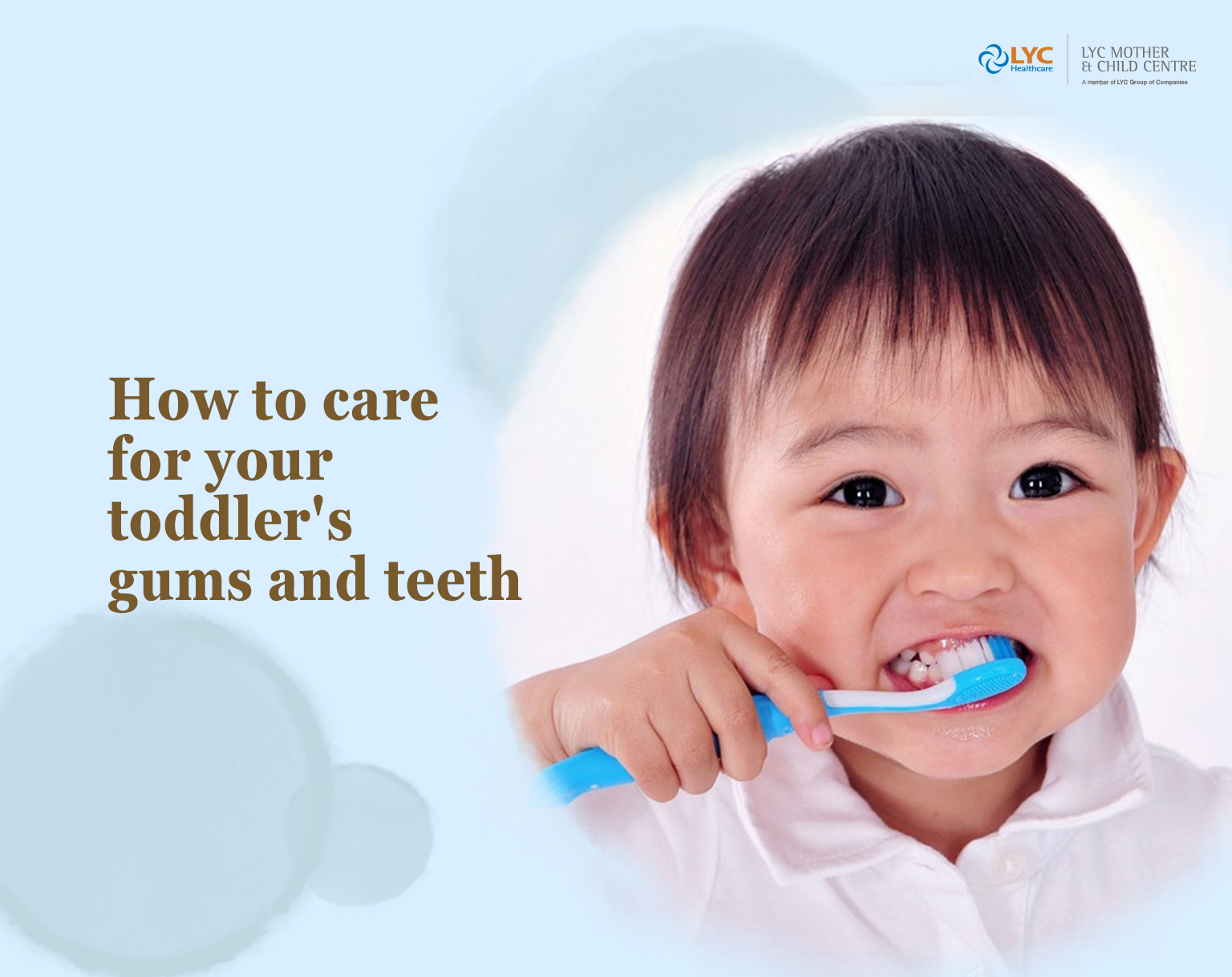How to care for your toddler's gums and teeth

It is important to take care of your toddler’s teeth and gums as healthy teeth help them chew food and speak clearly. Parents should help young children brush their teeth until they are 7 or 8 years old. Always supervise young children when they clean their gums or brush their teeth, choose healthy foods for them, and have regular check-ups with their dentist.
Here are some tips for maintaining healthy gums and teeth in young children:
Provide your child healthy foods
- Give your child healthy foods such as fruit, vegetables, whole grain products such as bread or crackers, and dairy products.
- Milk, yogurt, cheese, lean meats, fish, chicken, eggs and beans are also good for kids.
- Gradually wean your baby from a bottle to a cup by 14 months old.
- Don't let your child fall asleep with a bottle full of milk, juice, or sugary drinks such as fruit-flavored drinks or soda.
- Children 1 to 3 years old should drink no more than 4 ounces of fruit juice per day; children 4 to 6 years old should drink no more than 4 to 6 ounces of fruit juice per day. It is better to give your child fruit instead of juice.
- Make sure your child drinks several glasses of water daily, as water contains fluoride.
- Cut back on your child’s sweet treats such as candy, biscuits or cake, and limit them to mealtimes.
- Reward your child with a big smile or a hug, not food.
Oral Care Tips
- If your mouth looks clean, and free from odour and food particles between your teeth, you have good oral hygiene.
- Healthy gums should be pink and flesh-colored in appearance and not swollen.
- When flossing or brushing your teeth, it shouldn't cause your gums to bleed.
- Cleaning and caring for your mouth every day and having regular dental checkups can prevent toothache or serious dental problems such as periodontal disease or tooth decay.
- Because young children's teeth are still fragile and prone to decay, be sure to use a soft bristle toothbrush.
- Floss to get rid of tartar and food residue between your teeth.
Plaque and Cavities
- Plaque on teeth is a colourless, sticky film of bacteria. These bacteria use the sugar in food to form acids that eat away at the enamel of your teeth.
- Failure to brush and floss daily to remove plaque can lead to gum disease and tooth decay.
- Cavities usually start as pale white spots on the teeth, which will gradually darken or turn brown and form small holes in the teeth.
